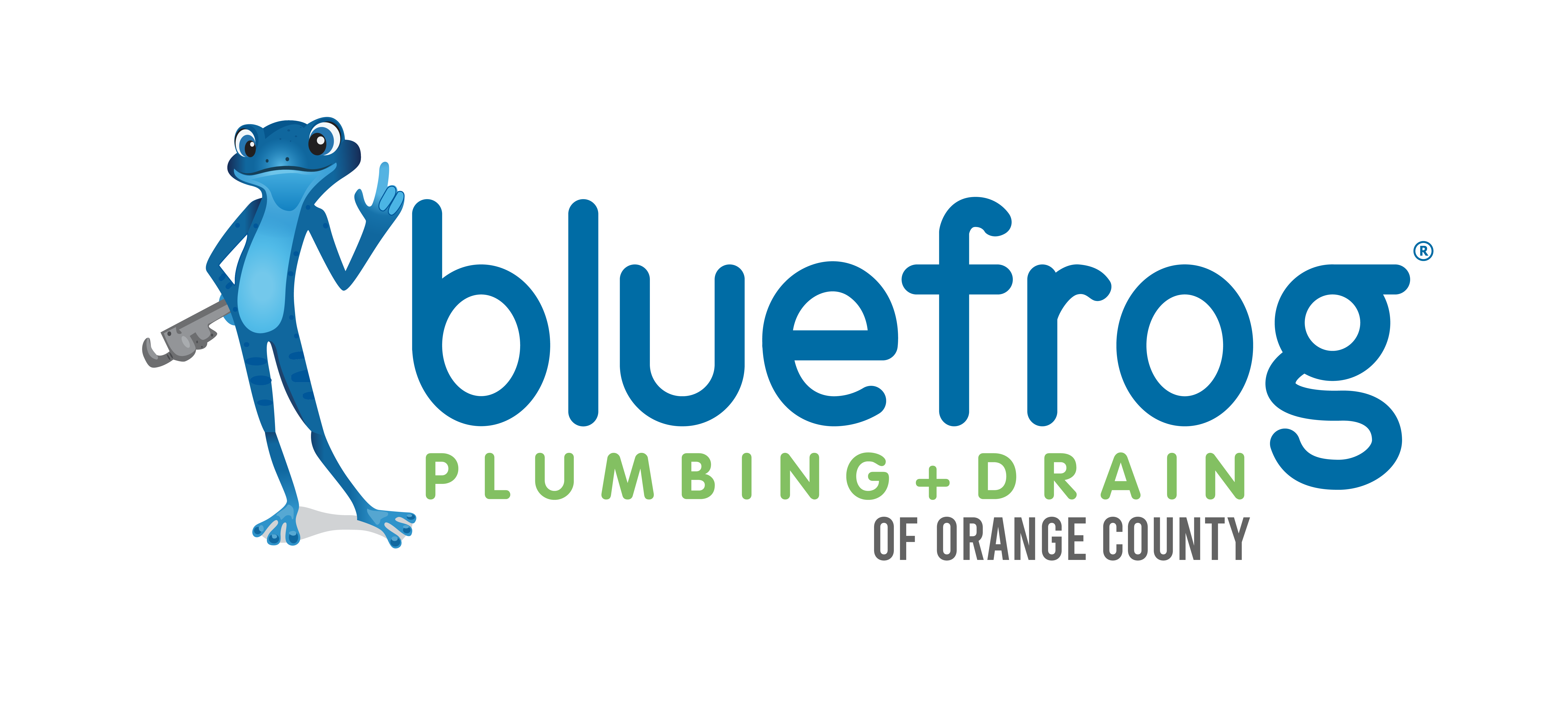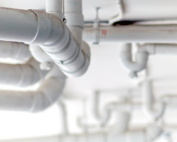Home building following World War II was aggressive, so many houses were built on cement foundations to reduce the time it took to build them and to keep costs at a minimum. They were also constructed in areas of the country where soil tends to be unstable and prone to shifting. Slab construction is still in use today and, as you will learn, can lead to serious problems.
These foundations are referred to as slabs which are 4-6 inch thick cement pads reinforced with rebar for stability. Because these types of homes do not have crawlspaces or basements, the plumbing is installed beneath the cement foundations and is therefore hidden, making problems hard to detect and especially difficult to access. Failures in these plumbing systems are referred to as slab leaks.
In this article, we will look at the common reasons slab leaks occur and the signs we use to determine when a slab leak is present. We will then learn about the methods available to repair slab leaks and restore the plumbing system.
What Can Cause A Slab Leak?
Faulty Installation
Faulty installation of the slab itself may be an issue. Slabs that are not thick enough or those built on unstable soils can quickly lead to slab leaks as they shift and tilt and come in contact with the plumbing pipes.
Incorrect installation of the plumbing pipes can also lead to slab leaks. Plumbing systems require varying types of pipe materials to be appropriately joined to ensure leak-free connections, and errors will undoubtedly lead to leaking.
Chemical And Mineral Corrosion
Plumbing pipes, especially those made of metal, are prone to corrosion. Interior corrosion is the result of certain minerals, chemicals, and other particles present in the water supply. Galvanized steel piping, popular in the 1950s, is a durable pipe material, but it is known for interior corrosion. The pipes were initially lined with zinc to prevent the lining from interacting with the water, but over time, the zinc wore away, leaving the pipe interior exposed and rust forming from mineral buildup.
Plumbing pipes can also corrode from the outside in. Cast iron pipes used for sewer lines are examples of pipes prone to external corrosion. Chemicals found in the soil surrounding the pipes caused them to break down and fail to the extent that sleeves are now installed to protect them from external corrosion.
Plastic pipes are becoming increasingly popular as their smooth lining allows for the free flow of water, and they are naturally corrosion-resistant.
Shifting And Erroding Soil
Slab foundations and the plumbing pipes that run under them depend on solid soil supporting them. In the event the soil should shift, either from earthquake activity, nearby construction, or the presence of underground waterways, the pipes and the slab are no longer supported and suffer from excess stress placed on them.
As the soil shifts, the pipe joints tend to loosen and leak, and even a small leak will erode the soil causing less support and a higher chance of fractured pipes and cracked slabs.
Friction
As the pipes shift, they may rub up against rough soil or even the slab itself, weakening the pipe material and leading to abrasion and pipe leaks. Pipes carrying hot water are more prone to leaking in this manner because they expand and contract due to the heat of the water. When expanded, they significantly increase the chances of friction occurring.
Signs A Slab Leak May Be Present
Because slab leaks occur in plumbing that is buried underneath the slab, they are not easy to detect. A slow leak can go on for a long time until a secondary sign appears to alert homeowners something is amiss. Here are common signs we use to detect hidden slab leaks.
Increased Water Bills
The water meter in every home records the amount of water entering so that correct billing can be established. During a slab leak event, water runs out into the surrounding soil and is wasted, but you are still charged for the water you never use. A sudden increase in water usage is a sure sign of a slab leak.
Sound Of Running Water
Another common complaint we encounter is a customer who hears running water even if no water is in use. The water they hear is water escaping from a failed underground pipe.
Cracks In The Foundation
As previously stated, a slab leak will erode the soil supporting the slab and the plumbing pipes. This erosion can become so advanced the slab will lose its stability and begin to crack. This may cause interior walls to buckle, floorboards to twist and warp, and even result in a need to abandon the property due to damages too extensive to repair.
Damp or Hot Spots On Floors
As plumbing pipes fail, the leaking water will eventually rise to the surface and appear as wet spots on the floor. A damp carpet will warn that a slab leak is in progress. As noted, hot water pipes are especially vulnerable to leaks and will first show signs of hot spots before wetness occurs.
Mold Growth
A slab leak frequently leads to dangerous and unhealthy mold growth. As water escapes the plumbing pipes, it is quickly absorbed into drywall, insulation, and floor joists, where it begins to grow mold. Seeing mold or smelling a mildew smell will alert us to a possible slab leak.
Uneven Growth Or Water Pooling In Yard
As the water flows out of failed plumbing pipes, it will naturally enhance the lawn areas situated over the slab leak. If left unattended long enough, the water will begin to pool and leave puddles in the yard.
Solutions For Slab Leaks
Slab leaks are true plumbing emergencies because they are difficult to access and repair since they are located under the cement slab foundation. Our work is to reach the plumbing failure quickly and accurately while minimizing the inconvenience, disruption, and costs associated with a slab leak. Here we will discuss the common methods we use to remedy plumbing leaks underneath cement slabs.
Rerouting Or Repiping
Rerouting and repiping the original plumbing pipes is a good option for repairing slab leaks as they do not require jackhammering of the cement foundation or digging up the yard to access the damaged pipes.
New pipes are installed along the perimeter of the slab or are run up the outside of the home and relocated inside attics or nearby buildings. The old plumbing stays intact while the new pipes are installed, so there is no interruption of service. Once the new pipes are complete, the old plumbing is essentially abandoned, and the new system becomes operational.
Tunneling
Tunneling is another option, although it is more invasive. Tunnels are dug alongside the slab so plumbing failures can be reached, repaired, or replaced. The most important aspect of tunneling repair work is the soil removed for access must be restored correctly so the slab and plumbing pipes are properly supported or more trouble will occur in the future.
Breaking The Slab
This solution is the most costly and most disruptive, as the slab needs to be jackhammered to reach the leak. This will ruin flooring and create difficult living conditions, frequently causing families to temporarily vacate their homes while the slab leak repair is completed.
Looking For Slab Leak Repair?
As you have learned, homes built on cement slab foundations are prone to plumbing failures for various reasons, and the signs of slab leaks can be difficult to detect. This is why we offer top-rated slab leak services based on years of experience and expertise to quickly and responsibly find and repair slab leaks to minimize the damage they cause.
We will assess the situation and devise a solution that best fits your particular situation. We aim to fix your problem with as little inconvenience as possible and return your home to the safe and comfortable haven you desire. Give us a call today to schedule an appointment!

Slab Leaks: A True Plumbing Emergency
Home building following World War II was aggressive, so many houses were built on cement foundations to reduce the time it took to build them and to keep costs at a minimum. They were
How To Extend The Life Of Plumbing Pipes
A plumbing system consists of a complicated series of pipes, fixtures, and appliances that provide the infrastructure to run a well-functioning home. In this article, we will focus solely on plumbing pipes and ways
3 Silent Signs You Have A Plumbing Problem
Some plumbing issues announce themselves with a fury such as a drain backing up with sewage or a burst pipe, while others remain silent and destructive. In this article, we will reveal 3 signs



